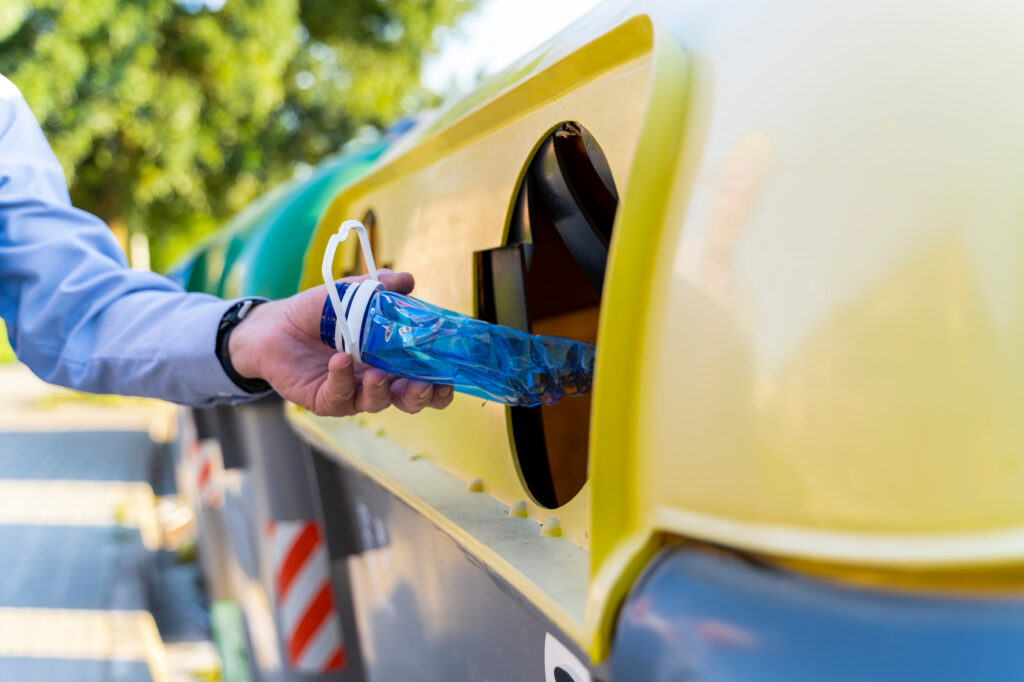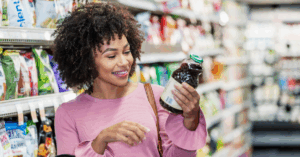
Memo
That Time When Plastic Saved the Elephant
MEMORANDUM
To: Interested Parties
From: Consumer Brands Association
Re: That Time When Plastic Saved the Elephant
Date: May 21, 2025
Some quick history (it’s relevant!). It all started with billiards and a contest (as things often do). In 1869, a New York firm was looking for a substitute for ivory for billiard balls and offered a $10,000 prize to anyone with an idea. Enter John Wesley Hyatt, who created a plastic, or synthetic polymer, that could be molded into different shapes such as spheres, thus reducing the demand for ivory and the killing of wild elephants.
Plastics’ attributes make it revolutionary and ubiquitous. Pliable and moldable (Legos!), lightweight (there’s a reason you can lift your laundry detergent and your iPhone doesn’t weigh 12 pounds) and heat resistant, which makes it very attractive for food packaging, and food safety is kind of a big deal here.
For the consumer packaged goods (CPG) industry, delivering safe, affordable and convenient products to consumers every day is priority number one.
Safety, quality and innovation doesn’t stop at what’s inside, it also extends to what’s on the outside, and our industry’s commitment to how a product is packaged. Think of your favorite food, beverage, household and personal care products and the variety of ways they are packaged – and the confidence you feel consuming or using those products because of its safe and effective packaging.
Product packaging offers a variety of important benefits for consumers: safety, preservation, availability, information and sustainability. CPG manufacturers have long been leaders in meeting consumer demand for more sustainable packaging and minimizing how much packaging is used.
That’s all well and good, but what about all the plastic waste?
Fair point. Here’s where we surprise you with a plot twist, show off some technical expertise, then dazzle you with cool technology to help solve the problem.
First, the Plot Twist
There is no plot twist. There’s no controversy. Only agreement on the need to reduce plastic waste. And there’s a relatively simple solution — we need to recycle it. (We know what you’re thinking — recycling is BORING. But if this memo does one thing, to convince you that recycling is interesting, even consequential, then we’ll consider this a very fine memo indeed).
Recycling. We all know what it is: collecting and processing materials that would otherwise be trash and converting them into new things. We also know households across the United States want to recycle.
Due to the nearly 10,000 local independent recycling systems scattered across the country, consumers are all too often confused about what and how to actually recycle. This can often lead to “wishcycling,” or consumers hoping what they are putting in their recycling bins doesn’t end up in a landfill. Comingling of packaging that isn’t recyclable with packaging that is can lead to the whole bin being thrown out. This ultimately nullifies the efficacy of using recyclable packaging to reduce waste.
Low recycling rates aren’t just a burden on the American consumer— it harms the overall economy as well. Outdated, inconsistent recycling system prevent economies of scale and hinders market efficiency, preventing progress to a circular economy.
The Not-So Technical Section, Because It’s the (Circular) Economy, Stupid
What’s a circular economy again? A regenerative cycle where, ideally, plastic stays out of landfills and “stays in play” as long as possible. A circular economy lowers consumer costs and reduces plastic waste. In short, good for the consumer, helps the environment and good for business.
State governments across the country have implemented their own policies with the hope of advancing circularity. Two examples of these types of policies are post consumer recycled content (PCR) requirements and extended producer responsibility, otherwise known as EPR legislation.
PCR is material made from items that have been used by consumers and then recycled. Legislation across states mandates certain amounts of recycled materials that should be used in the production of new packaging. This is most common in beverage containers, but there is a move to apply the concept to many more types of packaging.
EPR laws aim to move the financial responsibility and recycling system management from municipalities to the companies that make and ship products, or “producers.” For EPR to be a true success, and for a circular economy to be in reach, it needs to be designed so that it achieves its intended goals of improving recycling access, collection rates and overall materials circularity. This benefits communities and doesn’t add undue cost burdens to consumers.
Our industry remains committed to the pursuit of a circular economy in the United States. We look forward to working with regulators to shape policies that will achieve this goal, and uniform recycling definitions are ground zero for effective recycling reform in the United States. Without this, additional legislative policies will fall flat.
The Solve: Definitions, A QR Code and Molecules
So, what is needed to create a more effective recycling system in the United States?
First, and most importantly, we need uniform recycling definitions that alleviate consumer confusion and limit contamination rates. Regulators must coordinate to provide clear guidance to states, municipalities, and, most importantly, consumers on definitions as basic as recyclable, compostable or reusable.
We need to eliminate questions like:
“Do I need my dog to lick out all the peanut butter at the bottom of the jar before putting it in the recycling bin?”
“My county accepts pizza boxes, so I must be able to recycle this one at my friend’s house, right? After all, he’s only in the neighboring county.” (The answer to that last question — no. Not if they live in Fairfax and you live in Arlington, Virginia, even though their house is less than 20 minutes from you.) This is why uniform recycling definitions must exist. America’s disjointed recycling systems are hurting the American consumer and hurting the American economy.
Eliminating the Guesswork from Recycling, One QR Code at a Time
Coherent and unified national recycling definitions aren’t going to magically appear overnight. It will take a joint, long-term effort between national, state and local policy makers and regulatory agencies in partnership with industry stakeholders.
It is unreasonable to expect consumers to navigate those previously mentioned 10,000 different recycling systems.
Enter SmartLabel. The digital tool provides consumers with easily digestible recycling instructions. With the product package in their hands, a consumer can figure out how to recycle it by scanning a QR code and entering their zip code. It’s that easy. Local recycling guidelines at your fingertips.
CPG companies are leaders in increasing recyclable content, minimizing packaging and reusing materials. Our SmartLabel development continues this trend by empowering consumers to increase recycling rates and decrease waste.
Our industry understands that we play a major role in the waste and recycling infrastructure of the United States. Because of this, we are determined to advance new and innovative solutions to move recycling forward — even in the face of arcane, disjointed recycling definitions (or lack thereof).
Molecular, the Swiss Army Knife of Recycling
In the United States, the dominant recycling method is mechanical, and it plays a foundational role in recycling. However, it can take us only so far on our circularity journey as it has limits on the types and number of times certain plastics can be recycled. Think of it this way: do you want your water bottle to have recycled content from a detergent bottle?
Molecular recycling, however, can complement mechanical recycling and increase plastics circularity by essentially bringing packaging down to its basic molecular building blocks. These building blocks become the raw materials to make all sorts of new products, including plastics used in food-contact packaging. Advanced recycling allows a broader range of products to be recycled, like important packaging or product types like multi-layer items that we rely on for food safety; cleaning ingredient containers; or even your favorite old sweatshirt or throw rug. And, unlike mechanically recycled plastics, which degrade at a high rate, molecular recycling produces high-quality raw materials with no compromise in safety, quality or performance, no matter how many times the plastics are recycled.
Molecular recycling is like recycling’s Swiss army knife: Just as a Swiss army knife can be used in a variety of situations; the molecular process can be used to effectively recycle and repurpose nearly all types of plastic.
However, the full potential of molecular recycling remains untapped, and the CPG industry is leading the way to help reveal its potential.
Equal Regulatory Treatment
If the CPG industry is ever going to reach our end goal of achieving a true, zero-waste circular economy, proper regulation is required. This includes frameworks around molecular recycling, as the process is mission critical to achieving a circular plastic economy in the United States.
Mechanical and molecular recycling are complementary tools in our industry’s fight to keep plastics out of landfills and must be regulated accordingly.
Molecular recycling should be subject to the same environmental oversight as a manufacturing facility. After all, it is a manufacturing process.
Additionally, both mechanical and molecular recycling should be equally accepted as tools in meeting regulatory requirements, so long as their processes exhibit mitigated environmental impact. Both processes create legitimate recycled outputs, and, because of this, deserve equal environmental marketing consideration.
Now, that’s a lot of words just to say the following: molecular and mechanical recycling function as compliments and should be treated as equal.
If policymakers fail to understand this fact, they risk hindering innovation in the space, handicapping the efforts of the entire industry to reduce plastic waste, mitigate environmental degradation and achieve true packaging circularity.
Challenge Accepted
Our consumers have challenged us to reduce packaging waste and increase recycling in the United States. We know that recycling is good for the American consumer and the American economy.
We’ve accepted. The CPG industry is spearheading efforts to bring America into a new era of recycling, and we know what’s needed:
- Uniform recycling definitions that alleviate consumer confusion and limit contamination rates.
- Effective implementation of recycling policies that prioritize improving recycling access, collection rates and overall circularity.
- Prioritization of innovative recycling solutions such as molecular recycling.
Our industry stands ready to meet this challenge. Driven by innovation and collaboration, CPG companies are full-speed ahead on working towards a zero-waste, circular economy.




